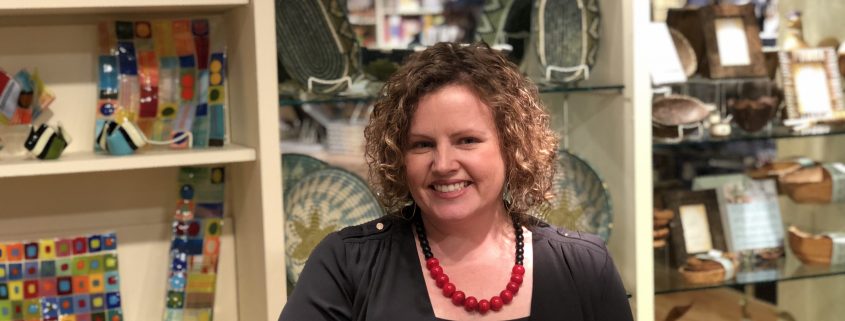MSA FORWARD 2018: Creating a Strategic Plan for Your Museum Store
March 12, 2018
By Colleen Higginbotham
As I prepare for my presentation for MSA Forward 2018 (Creating a Strategic Plan for your Museum Store), I’m reminded of why we created a strategic plan in the first place. Each year, we would return from the MSA conference invigorated and full of ideas. We were buzzing and eagerly prepared to dream big and steal from the best. Unfortunately, when we would return, we were hit with reality — which for me means a very full inbox and a meeting schedule that seems to rival my doctor’s office at times.
It felt like we were full of ideas, but never took the time to prioritize them or make a plan. We would execute new initiatives each year, but again, were they the ones we liked the best? At the same time, I felt like I needed to present something to our Director, my boss, that showed the role of the shop within the organization and our overall goals in what we purchase. We created a one page information sheet a few years ago that talked about the role of the shop in the visitor experience and the types of objects we sell (souvenirs of your visit, a new work of hand-crafted art, items that inspire creativity, etc.), but it felt like we needed more.
When we set out to create our store plan, our first step was to look to our Museum’s strategic plan. Understanding the priorities of the larger institution can be really helpful in the process. For example, if the museum plans to focus on a particular collection area, that could be a priority for custom product. If there are larger goals to be more green, the shop could evaluate packaging options or feature artists who create work out of recycled materials. This step positions the store as a part of the organization, rather than a separate entity. It can also help with inter-departmental communication and strengthen relationships with colleagues. If you care about their priorities, they are much more likely to care about yours.
For our next step, we looked at many content areas and went through the same process with each area. First we brainstormed with no limits. Every crazy idea was worthwhile. That was actually a lot of fun. Within a few minutes, we fell into some more realistic ideas. I think starting with the really wild ideas forces you out of your routine and allows you to get really creative.
For example, one of our topics was the physical shop. While it would be fantastic, we decided it was unlikely that the museum would be funding a two story expansion to allow for a larger shop with all new white fixtures and elaborate lighting. However, in the next few years some of our goals will be to paint, work on improving our apparel display, and create a “Collector’s Corner” for high end merchandise. We will likely have to work with many of our existing fixtures, so we turned to Pinterest to make a coordinated color scheme that looks a little more modern.
Some of the other topics we included in our plan were product development, staff training, shop events such as trunk shows, our merchandise displays in other buildings like our historic houses and glass studio, store metrics, online sales, and the infamous “other.”
In the session at MSA Forward, I want to share our process, some of the discoveries we made, and a little bit of what happens next. I hope to see you there!
Colleen Higginbotham is the Director of Visitor Services at the Chrysler Museum of Art in Norfolk, VA. With over twenty years of customer service management experience, she manages the visitor experience through supervision and training of front line staff, ongoing analysis of visitor research, oversight of Museum Shop, catering contract, Special Events department, and coordination of visitor logistics including seating, signage and traffic flow. She also serves on the Museum’s senior leadership team. In 2007, she implemented the Museum’s Gallery Host program which provides visitors with a warm welcome and places customer service staff in the galleries to assure the safety of the collection, answer questions and engage visitors in casual conversations about art.








I totally relate to the dilemma . Although i am the owner of the gallery, the same questions arise which really quite boils down to the budget. However, the museum gift shop is quite vital because it creates memories for the visitors and encourages them to share their experience with others who will want to visit the museum itself. This is also our experience as a gallery. The gift shop items encourages them to come back and bring others and in the end when their budget allow actually buy art. The gift shop is really a vital part of any museum and gallery and should really be given support as it is a vital marketing tool and vital for memory recall.